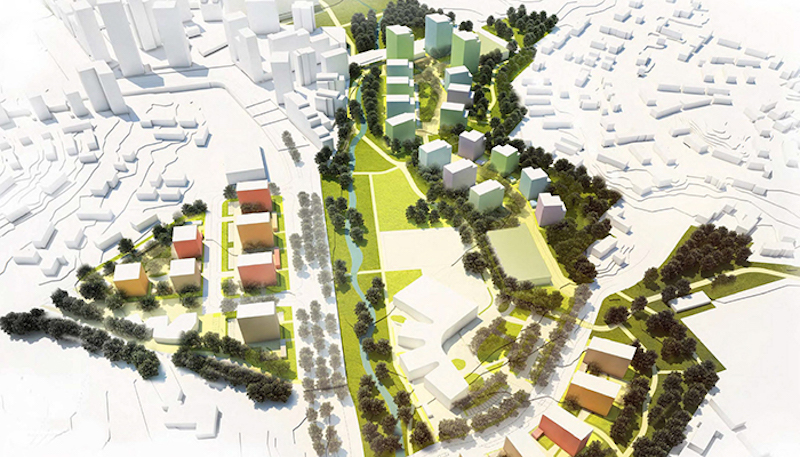Finland’s first geothermal local heating network planned for Finnoo, Espoo

A new residential area in Espoo, Finland – about 20km outside the country’s capital Helsinki – is planning Finland’s first geothermal district heating system built upon heat exchange approach with wells of a depth of 2,000 to 3,000 meters.
In Espoo’s Finnoo new residential area, heating may in the future be sourced from a depth of two kilometres. The plans for the new district include the construction of Finland’s first geothermal local heating network, which would enable the realisation of a residential area with zero emissions from heating and cooling.
The network is being planned for Djupsundsbäcken, the first area of Finnoo to be built. There are currently two building projects being planned in the area, the first of which includes approximately 6,000 square metres of permitted building volume, which will be designated for non-subsidised housing production. The second project consists of state-subsidised rental and right-of-occupancy housing, with a permitted building volume of 11,400 square metres.
Espoo at the forefront of emissions-free heat generation
“The realisation of a geothermal energy network in Finnoo would support the realisation of Espoo’s carbon neutrality objectives. Finnoo is also hoped to become an example area of sustainable development for testing innovative energy solutions,” says Project Manager Kimmo Leivo from the City of Espoo.
The area reservation for non-subsidised housing production was applied for by Avara Oy, whose partner in the project as regards the energy solution is Quantitative Heat Oy (QHeat). One of the prerequisites for the plot conveyance is the utilisation of geothermal energy in the heating and cooling of the buildings. The area’s rental and right-of-occupancy housing production is being planned by TA-Yhtiöt.
The deep well technology developed by Qheat makes it possible to generate all the heating and cooling energy that the properties need carbon neutrally.
“We want to show the way when it comes to sustainable solutions that do not rely on non-renewable energy sources. This new technology reduces the emissions resulting from properties’ energy consumption by up to 95%. This type of medium-depth heat well and associated local energy solution have not been previously realised in Finland,” states Avara’s Chief Operating and Development Officer Tuomas Rantsi.
“The TA-Yhtiöt properties to be built in the area can be incorporated into the local heating system. We are very happy to have been given the opportunity to participate in the project. Our aim is to connect one of our four blocks of flats to the existing district heating network. This will allows us to compare the larger investment costs to the cost-savings achieved during use,” says TA-Rakennuttaja Oy’s Managing Director Ilkka Joenperä.
Finnoo is being built from the best bits
Building in Finnoo is steered by energy-efficiency criteria set by the City of Espoo, which operators selected to contribute to the area are required to commit to. The area’s residential buildings should also be planned and realised in a way that enables their energy consumption to be measured in real time.
Finnoo is a unique new urban area being built around the metro station, by the seashore and close to nature that will provide housing to 17,000 residents of Espoo. In addition to the metro station, the construction of the district’s streets and public utility services is also in full swing, and the area’s first residential buildings are also already being built. Finnoo will be primarily completed in the 2030s.
The technology to be used is built on the concept developed by QHeat, a finish technology company. It is essentially built upon ground source heat models, yet utilises much deeper wells that reach a depth of 2,000 to 3,000 meters. Temperatures at this depth are significantly higher and thus much more energy can be produced. Also, the heat well technology is more advanced allowing efficient heating, cooling and seasonal energy storage.
Source: Espoo